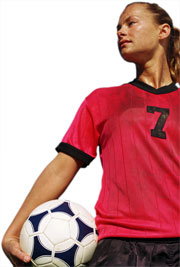A sport is a challenging undertaking that requires full attention and right focus. In other words, this endeavor needs psychological factors to keep on the right track. Sports psychologists are there to provide these needs such as overcoming problems, enhancing the performance of amateur and professional athletes, and achieving their goals.
Sports psychology is a discipline that involves the study of how psychology affects the performance of players and influences exercises, training, and sports as a whole. Sports psychologists may work with parents, coaches, and athletes on various aspects like injury, rehabilitation, team building, communication, and career transition. Psychological factors help to fully motivate them and improve their performances.
However, aside from helping the athletes, improving non-athlete’s well-being is also part of sports psychology through the application of different physical activities, exercises, and techniques. So being a sport psychologist is really a challenging career path for psychology students. Those who choose this course are mostly fanatics of sports and other forms of recreational pursuits.
The major subjects within sports psychology are the following:
Attentional focus – It is the ability to focus attention or maintain concentration on the task at hand despite of distractions like performing in front of a group of cheerers or screaming fans. An athlete who develops a good attentional focus knows how to broaden or narrow attention depending on the situation of the event or game.
Imagery – This involves purely mental processes, such as visualizing competing for a game or performing an athletic skill. It is a psychological factor designed to boost self-confidence, improve athletic ability, learn the right mind frame before a competition, speed up recovery after an injury, and promote relaxation after competition. Athletes reproduce positive experiences from the past or create new experiences through imagery without producing any visible body movements or receiving external stimuli.
Motivation – Coaches and trainers, who also wear jersey with custom digitizing design, adopt this strategy as a key to success. The motivation may come from external influences (extrinsic motivation) or within a person (intrinsic motivation). The former includes money, medals, trophies, or social recognition while the latter involves own sense of pride or personal urge to win the game or competition.



